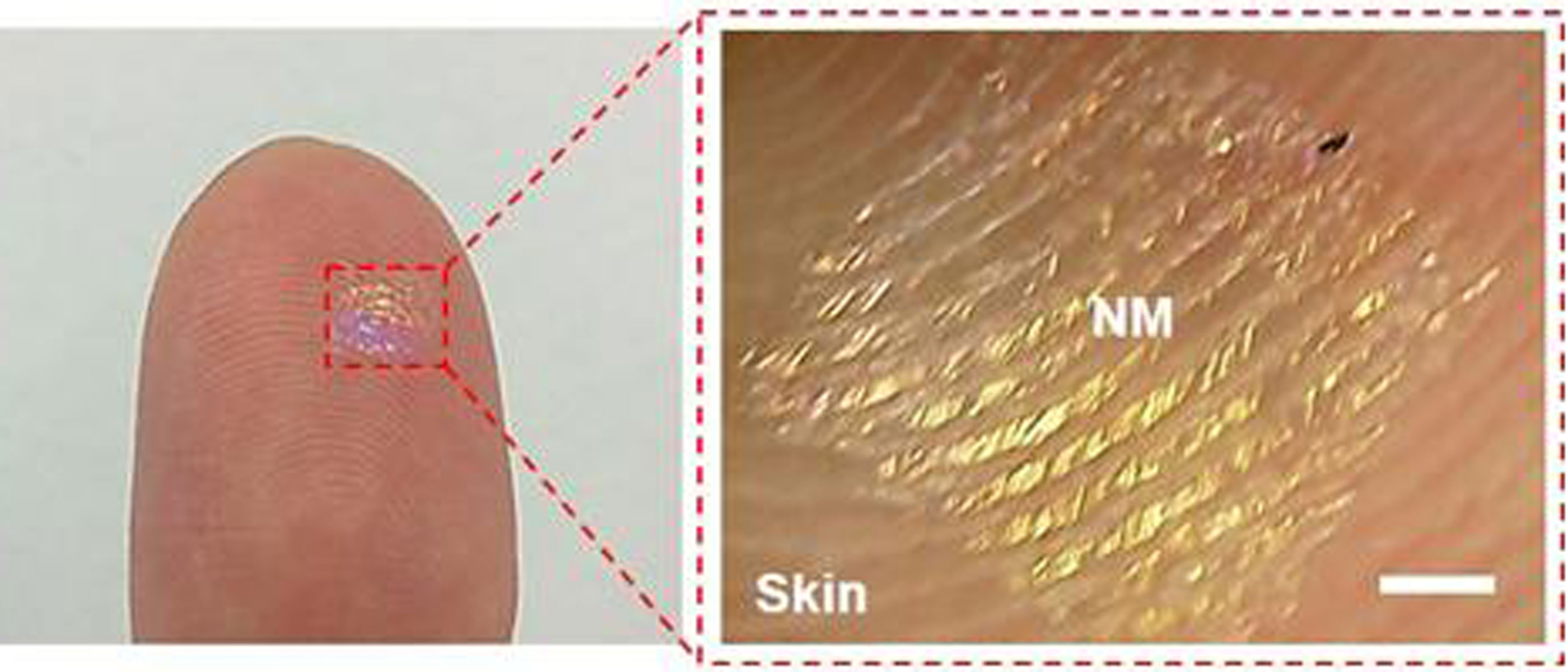Wearable tech is on the rise, with applications from remote physiotherapy to catching ‘chuckers’ in cricket. A South Korean research team has created nanomembranes (NM) that could add stick-on speakers and microphones to the list.
While nanoscale polymer membranes are light, flexible and able to be attached to virtually any surface, they have suffered from a lack of electrical conductivity and tendency to tear.
Professor Hyunhyub Ko from the School of Energy and Chemical Engineering at South Korea’s Ulsan National Institute of Science and Technology (UNIST) has found a way to resolve these issues.
 His team has embedded a silver nanowire array in a transparent polymer matrix to create a hybrid, conductive material that is less than 100 nanometres thick. That’s around 1000 times thinner than a sheet of paper.
His team has embedded a silver nanowire array in a transparent polymer matrix to create a hybrid, conductive material that is less than 100 nanometres thick. That’s around 1000 times thinner than a sheet of paper.
“These outstanding optical, electrical and mechanical properties of nanomembranes enable the demonstration of [a] skin-attachable and imperceptible loudspeaker and microphone,” Ko explained.
Resounding success
To demonstrate the new material, the researchers constructed a loudspeaker that could stick onto the wearer’s skin.
The speaker device used an AC electrical voltage to heat the silver nanowire array. This produced sound waves by causing temperature-induced oscillations in the surrounding air. The team used a commercial microphone to detect and record the sound.
A practical demonstration involved playing part of a celebrated piece of classical music through a device attached to a human hand.
“We were able to play and recognise Paganini’s well-known La Campanella violin concerto when played through the NM loudspeaker attached to the skin,” the researchers stated in an article recently published in Science Advances.
Ko and his team also designed a transparent, wearable microphone that was made up of their hybrid NM material combined with a micropatterned polydimethylsiloxane (PDMS) film. The hybrid NM was mounted between a ‘holey’ PDMS layer and a micropyramid-patterned PDMS layer.
“This sandwich-like structure can precisely detect the sound and vibration of the vocal cords by the generation of a triboelectric voltage resulting from the coupling effect of the contact electrification and electrostatic induction,” the research article stated.
Appropriately, the researchers used a speech on nanotechnology by visionary physicist Richard Feynman to test the NM microphone.
The prospect of rocking out to speakers attached to your skin is enticing, but the wearable tech also has potential applications with greater social and business impact. These include voice-based security systems and wearable sensors for healthcare devices and the Internet of Things.
However, the mechanical durability and performance of the NM speaker and microphone need to be further improved to make them suitable for commercial applications, Ko said.



